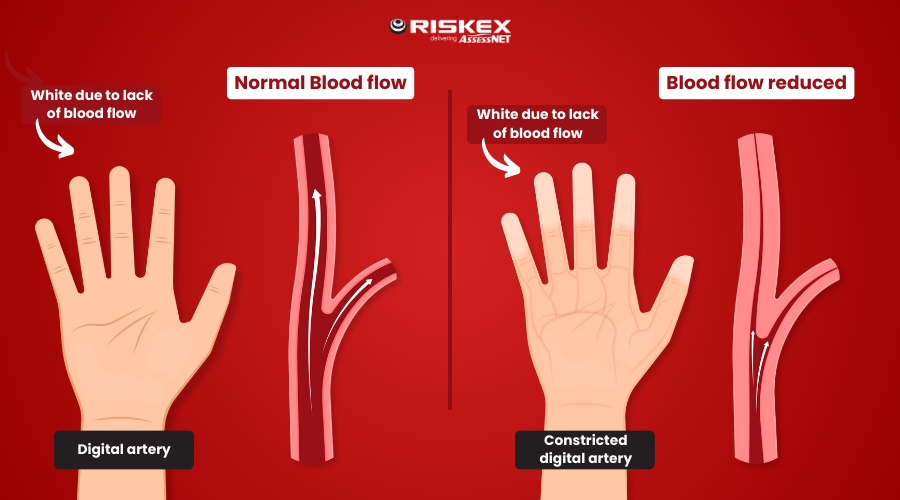What Is Raynaud’s?
Raynaud’s phenomenon is a condition that affects blood circulation, typically triggered by cold temperatures or stress. It causes the small blood vessels in the extremities—such as fingers and toes—to narrow, leading to reduced blood flow. As a result, affected areas may turn white or blue and feel cold or numb, followed by redness, tingling, or pain as circulation returns.

The condition can be classified into two types:
- Primary Raynaud’s: A mild, standalone condition with no underlying health issue.
- Secondary Raynaud’s: A more severe form linked to other medical conditions like autoimmune diseases.
How many people in the UK are affected by Raynaud’s?
Raynaud’s is more common than many realise. According to health studies, Raynaud’s affects up to 20% of the adult population. An estimated 10 million people in the UK experience symptoms of Raynaud’s, with women being disproportionately affected. While many individuals manage their symptoms with lifestyle adjustments, others may find their condition significantly impacts their daily lives and work.
The impact of Raynaud’s in the workplace – Cold working environments
For employees working in cold environments or engaging in repetitive manual tasks, Raynaud’s symptoms can become exacerbated, potentially leading to pain, decreased dexterity, and reduced productivity. Workers in industries such as construction, agriculture, and refrigerated environments are particularly vulnerable.
Measures for health and safety managers to consider for employees with Raynaud’s or in an environment where staff are more at risk of developing Raynaud’s
To mitigate risks for employees with Raynaud’s and create a supportive workplace, health and safety managers should consider the following strategies:
Conduct Risk Assessments
- Evaluate tasks and environments that may expose employees to cold conditions, vibrations, or prolonged stress.
- Identify jobs that may require additional protective measures or adjustments for affected workers.
Provide appropriate personal protective equipment (PPE)
- Ensure workers have access to thermal gloves, socks, and clothing to keep extremities warm.
- For roles involving vibrating tools, such as jackhammers, provide anti-vibration gloves to reduce strain.
Implement ergonomic interventions
- Adapt workstations or equipment to minimise repetitive strain and improve blood circulation.
- Rotate tasks to avoid prolonged exposure to cold or vibration.
Create warm zones
- Provide heated rest areas where employees can warm up during breaks.
- Offer access to warm beverages to help maintain body temperature.
Raise awareness
- Educate workers about Raynaud’s and its symptoms, emphasising early recognition and reporting.
- Encourage affected employees to speak openly about their condition and seek accommodations.
Foster flexible work practices
- Adjust workloads or schedules during colder months to reduce outdoor exposure.
- Allow employees to layer clothing or take additional breaks as needed.
Encourage medical support
- Promote access to occupational health services for employees managing Raynaud’s.
- Support workers in seeking medical advice for diagnosis and treatment options.
Raynaud’s may seem like a minor inconvenience to some, but for those affected, it can have a profound impact on their comfort and ability to work effectively. By implementing thoughtful health and safety measures, managers can create a more inclusive workplace that prioritises employee well-being.
A proactive approach to mitigating risks not only helps employees with Raynaud’s manage their condition but also enhances overall safety and productivity. After all, a workplace that safeguards its workers’ health is one that fosters trust, loyalty, and long-term success.






